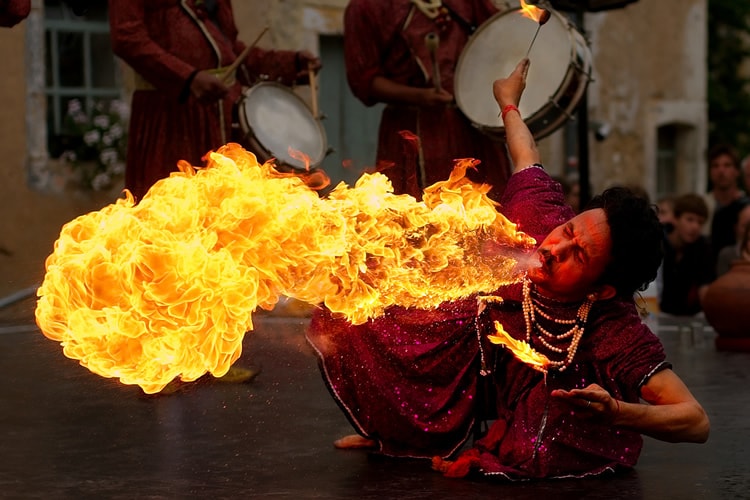Fire Photography – How to Take Shots of Burning Fire
Fire photography is tricky and potentially perilous, but it is mostly evocative. Fire mesmerizes us. The dancing pattern of the flames, the comforting source of light in the darkness and the way the light from the flames flickers.
Since we humans have such an intimate relationship with fire, it’s no wonder that it’s also become a highly unique subject for photographers.
It has to be pointed out that fire photography can also be a reference to snapping pictures of firefighters. Professional photographers who do this are called fire photographers, appropriately enough, but that’s not what we’re talking about here.

photo by AndersLindgren
In this tutorial, we’ll be dealing exclusively with how you can take stellar and memorable shots of fire. So watch it crackle, watch it burn and then snap yourself some very sharp fire photos.
Stay Safe
It doesn’t take a genius to figure out that you’ve got to make safety a priority when you’re working with fire. The smoke and heat can do some damage to your pricy equipment, the flames can shoot out of control and burn what shouldn’t be burned and, in the worst-case scenario, you can actually be killed. So do yourself a favor and keep these safety tips in mind before you start shooting:
- Only use a well-ventilated area for fire photography
- Never work close to anything that you absolutely don’t want burned
- Have an emergency plan ready to deal with putting out a fire, just in case
- Be well-organized and have a plan from start to finish for your shoot
The First Step: How to Set up Your Camera
Set up your camera so that it is in the correct shooting mode. This will enable you to get the most high-quality shots of the flames. One of the most basic things you should do right off the bat is turn off your flash. You won’t be needing flash for fire photography.
Then, you should throw yourself into experimenting with your camera settings. This will up the chances that you’ll snap sharper shots. For instance, you’ll want to play around with the exposure and exposure settings to determine what’s more effective in shooting fire.
The Second Step: Make Fire the Subject

photo by Luc Viatour
When fire is your subject, you want to show the flames, their effects and any ensuing details. It’s imperative that you utilize a quick enough shutter speed in this situation. You want to freeze the motion so that you can actually see the details in the flames. A recommended starting point for this goal is 1/250, but you can easily go faster if you find it working. When you use increased shutter speeds, you’ll want to rely on higher ISOs and wider apertures.
Fire is unpredictable. Anyone who’s watched a fire burn can attest to this. Therefore, you’ll often be surprised to discover that the more interesting details can be found in what is emitted by the fire. For example, the trail that sparks will blaze as they jump off a sparkler. For a picture like that, you should rely on slower shutter speeds.
The Third Step: Utilize Fire as the Accent
This kind of picture is characterized by the fire being just an element in a bigger scene. It’s quite hard to successfully pull off since you’ll require extra lighting to display your flames while still viewing your surroundings. The trick is to expose for the fire and then include additional light for the rest of your scene.
Of course, if you’re not capable of controlling your lighting circumstances, then you’re going to have to search for angles that will allow you to shoot the flames against a background in such a way that they will noticeably stand out. It’s preferable if you can locate a darker and more solid background. However, finding a background that provides any sort of contrast is really what should matter the most.
The Fourth Step: Make Fire the Main Light Source
For all its destructive power, fire is still an ideal light source due to its warm color and soft shadows. Let’s say that your primary light source is a campfire. You’ll have to rely on greater ISOs, wider apertures and longer shutter speeds to make a great shot. If you want to get closer to the campfire, your shutter speeds will have to be adjusted to shorter and medium ones. This is because stronger light will be falling onto the subject.
By using a wider aperture, though, you’ll encounter a narrower depth of field. To deal with this, make sure that you set the focus on objects that feature sharp contrast edges. An example would be stationary objects’ silhouettes. The temptation can oftentimes be to focus on the main subject, but this should be avoided. As a result, you’ll end up with an image that possesses great sharpness overall because the changing firelight is going to blur any edges and soften the shadows of objects it casts light on.
